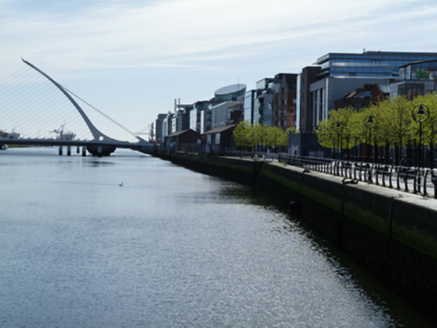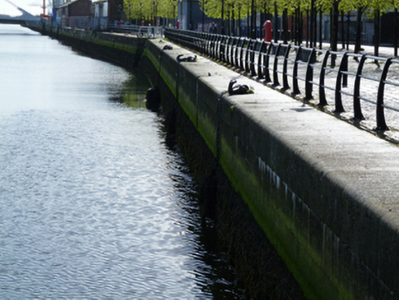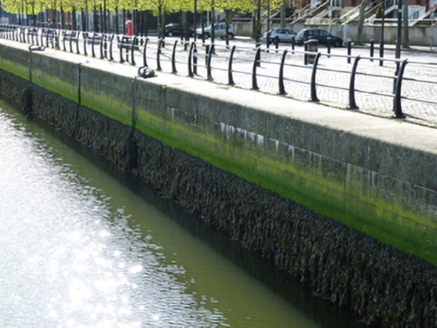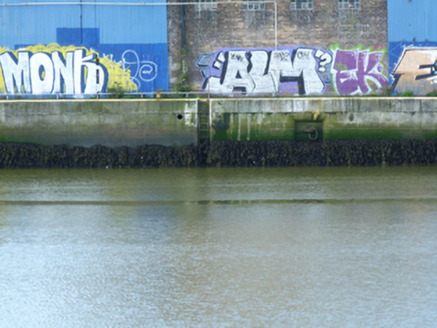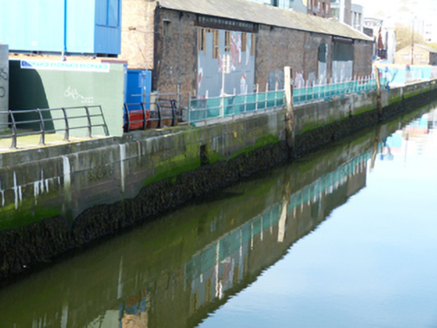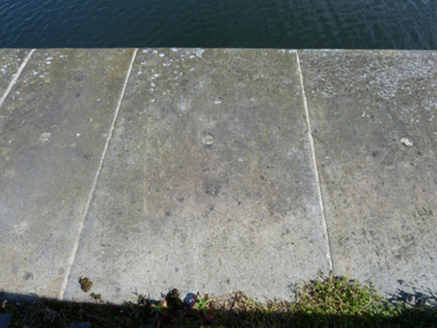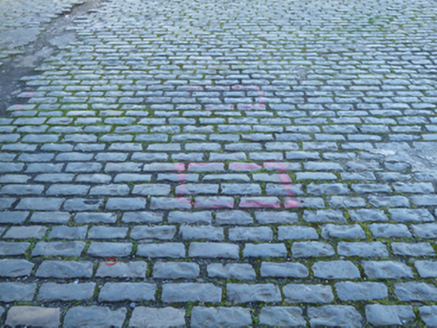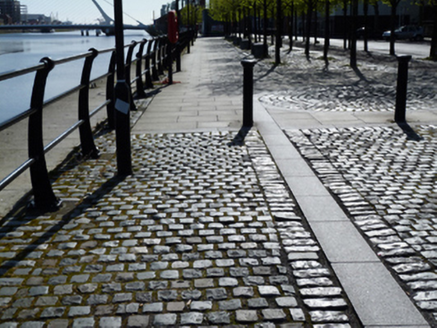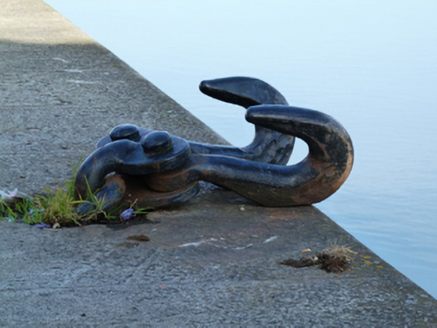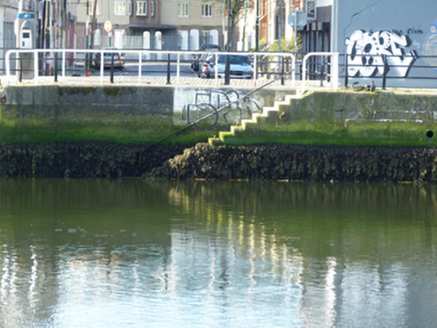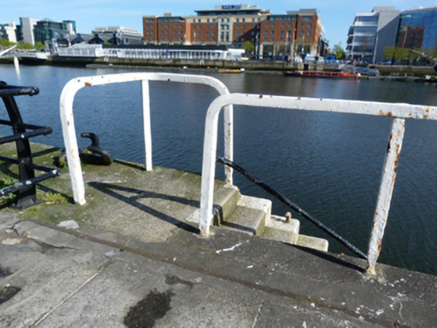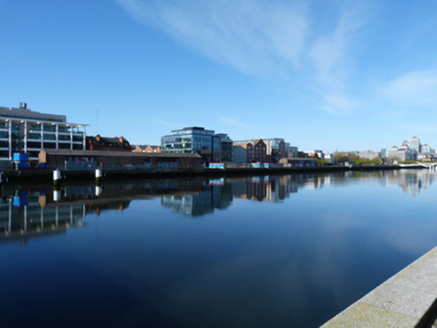Survey Data
Reg No
50020465
Rating
Regional
Categories of Special Interest
Architectural, Social, Technical
Original Use
Quay/wharf
In Use As
Quay/wharf
Date
1860 - 1880
Coordinates
316997, 234336
Date Recorded
26/04/2015
Date Updated
--/--/--
Description
Ashlar granite quay wall, erected c.1870, with ashlar granite coping. Cast-iron mooring hooks and mooring rings. Timber fenders to north of B. J. Marine building. Granite steps with cast-iron railings. Stone setts and inset cast-iron rails to campshire. Raised in height to east and west of Samuel Beckett Bridge as part of recent works.
Appraisal
Sir John Rogerson’s Quay was laid out in the early eighteenth century. It consisted of two parallel stone faces, the space in between filled with material dredged from the Liffey. It was the most ambitious of the privately funded quay developments of the period. It runs from Creighton Street towards Ringsend, where it turns at a right angle at the River Dodder. It is depicted on Brooking’s map of 1728, showing the quay lined with gable-fronted buildings, with the land behind ‘as yet inundated by the tides’. Rocque’s map of 1756 depicts a more varied mix of uses with buildings and yards, likely associated with maritime trades such as ship building and provisioning. The end of the eighteenth century saw the completion of the quay, and the start of residential development on streets laid out to its south. The quay walls were rebuilt on two occasions, once in the 1820s and again in 1869, as part of the deepening of the channel along this part of the River Liffey. The quay served an important function, allowing ships to draw alongside for loading and unloading, and is a notable reminder of the maritime heritage of the city. It is well-executed in ashlar granite, attesting to the high level of skill and artisanship employed in its construction and in civil engineering at the time.
